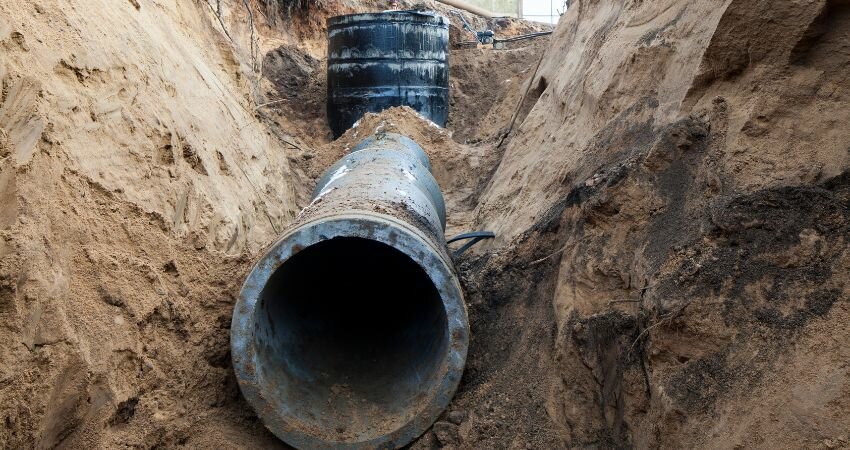Avoid costly repairs and unexpected stinky surprises by getting a sewer line scope inspection report before purchasing your home. Though less common than a home inspection report, a sewer scope inspection is just as critical and should be considered a necessary step in the house-buying process. A sewer inspection could save you a lot of heartache and money.
What is a Sewer Scope?

Before taking out a loan for what is likely the biggest purchase you’ll ever make, you want to be sure you are making a good investment. While it’s a part of life to deal with roofs that need replacing or sprinkler repairs that come up over time, any current major issues of a home should be vetted before you close. Banks often require a home inspection report and that is a great first step. With a home inspection scope report you’ll learn about the condition of your homes heating and air, indoor plumbing, electrical, insulation, basement, roof and more, but one critical part of your home that will not be covered is your sewer line.
A home inspector doesn’t have the tools or skills to be able to an adequate and complete sewer inspection including the line — the piping that goes from your house to the city’s sewer line. Because of this it’s in your best interest to call in a plumbing professional and have them do the sewage inspection while your home inspector is present so that both results can be recorded officially together and presented to the bank and home owners.
Even if your home is newer you could still run into issues with the sewer line which can lead to expensive and difficult repairs down the road. Older homes are at a much higher risk for sewer line problems so, a sewer line inspection should be top priority before closing on a home.
How Does a Sewer Inspection Work?

A technician will come to your home and identify a clean out, which is a capped pipe that protrudes from the ground on your property, often near a bathroom or property line. This pipe is connected to the city sewer line and is kept above ground so you can easily check and maintain your sewage line.
The technician will then use a small video camera that is connected to a long cable. The cable will be fed through the sewer line, allowing the camera to record any breaks or blockages that could cause future problems for your plumbing. These cameras can cover up to 200 feet which means they can usually go through your entire sewer line and give you video documentation of the entire pipe.
What are Common Sewer Line Problems?
If you have a sewer line inspection done then the technician could find that you have pipes in good condition or they could determine that there is a problem. Some of the common issues include:
- Older homes with old pipes. If your home was built before the 1970’s and miraculously still has the original pipe system then you will find that you have clay tile pipes. The way these pipes were built made it easy for tree roots to work their way in and clay pipes require cleaning every 6 months to a year.
- If your home was built between 1945 and 1972 it could have another variety of pipe known as Orangeburg Pipe. This type of pipe is made of wood fiber and tar pitch and is unfortunately not very strong. Because of this the odds are good that Orangeburg pipes would not still be in working order in the 21st century so you probably won’t have to deal with this pipe problem.
- Homes built in the 1980’s aren’t in the clear — we finally see PVC pipelines but the original PVC was much thinner than our current standards. Over time these pipes become thin and brittle and can break easily.
- A sewer line inspection will tell you if you have thick-walled Schedule 40 PVC which is what is installed in homes today. This product is more resistant to breaking and can withstand higher amounts of pressure.
- Other than old pipe issues a sewer line inspection could show breakage issues due to tree root penetration. This is the most common type of pipe problem. Tree roots are powerful and even the smallest break in your pipeline will lead to a water leak that will attract far reaching tree roots to reach in and move in to your pipe.
- If you live in an area that has ground shifting (that’s us, Utah!) then you may have pipes that get blocked.
- If a sewer line is put in improperly and the ground isn’t compacted well around the pipes when the home is built then you could deal with issues due to settling. This problem can lead to a belly or dip in your sewer line that creates a stagnant area where the sewage can buildup and eventually become blocked. Unfortunately these problems are a big fix and require digging up your sewer line to reposition it.
All of these problems can be easily identified by a professional with a camera when they do your sewer line inspection.
How to Tell if a Home has Sewer Problems (Without an Inspection)
Is it possible to determine sewer line problems without paying for a sewer line inspection? Regrettably, by the time you can tell that you have a sewer line problem from inside the house this means that the problem outside your house is big enough that it will mean a more costly and time consuming repair.
Some signs that you have a big problem with the sewer line include smelling sewage in your basement. Slow-running toilets and gurgling noises from the drains can mean the start of a sewer problem. These are just the first signs– once you can’t flush your toilet or have backflows of brackish water in your bathtubs or basement then you are sure there is a problem that needs addressing.
Thankfully this can all be avoided by having a sewer line inspection done before you decide to purchase a home.
What Will it Cost me to Fix a Sewer Line Problem?

Root problems, if discovered soon, can sometimes just require a plumber to augur the tree root out of the pipes which is much less expensive than replacing a broken line that can happen when you don’t do a sewer line inspection.
Older pipes that aren’t up to the current standard will be much more expensive and involve cutting the trench in your yard (or even under your driveway) to take out the sewer line and replace it with new pipes.
Because pipe issues can vary so greatly you’ll find that there is no average cost for repairs. Simple issues may set you back only a few hundred dollars while major problems can be up to $20,000 dollars.
What Should You Do if You’ve Discovered Sewer Line Problems?
If you’ve never had a sewer line inspection performed on your home, or you did not have an inspection before purchasing your new home then sewer line issues can be a costly surprise.
If you find yourself in a spot where sewer line problems cost more than you can pay or are putting a stop to you finding a buyer for your home then consider reaching out to Gary with Gary Buys Houses. Gary is a trusted real estate investor in Utah with a long history of buying homes in any condition. Gary will give you a cash offer so you can move and leave the expensive plumbing problems to the professionals.
Contact Gary today to get a customized quote on your home.
